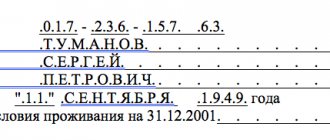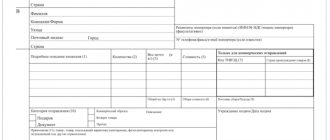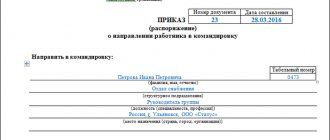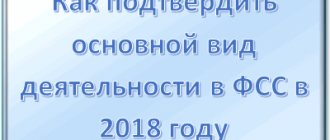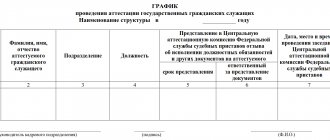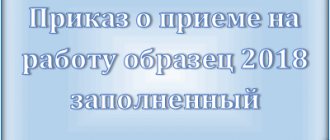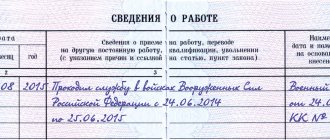There is a method that allows you to obtain finished products without having the appropriate production facilities. This is a tolling work scheme in which the owner of the facilities processes raw materials provided by the customer. This is convenient and beneficial for both parties to the transaction. The only ones who most often make complaints about such cooperation are tax services. However, the risk of tax troubles can be reduced if you correctly follow all the details of work and registration under the tolling scheme.
Let us consider the features of the functioning of the tolling scheme, as well as the rules of its accounting and the nuances of taxation.
How does the tolling scheme work?
A tolling scheme of work is an organization of the production process when the customer transfers his raw materials to another organization for processing in order to obtain products with specified qualities. In this case, both the raw materials and the finished product remain the property of the customer, and the organization performing the work simply fulfills the terms of the contract, providing its facilities and labor for the agreed remuneration.
REFERENCE!
If any waste or surplus remains as a result of the processing of raw materials, these also belong to the customer, unless the contract provides for their provision as part of the payment.
The supplier is the owner of the raw materials and the customer of the production processing. Raw materials owned by the supplier, transferred by him for subsequent actions, can be:
- produced by the dealer himself;
- purchased from any sources;
- received under the terms of any transaction.
The legislative justification for such a cooperation scheme is clause 156 of the Methodological Instructions for Accounting for Inventories, approved by Order of the Ministry of Finance of Russia dated December 28, 2001 No. 119n.
https://youtu.be/zmbFz3i4xk0
How to formalize transactions with the unused balance of the tolling scheme?
There are often cases when there are leftover raw materials or returnable waste, which also need to be reflected in accounting.
From the customer's side, the accounting entry looks like this:
| Debit (Dt) | Credit (Kt) |
Suitable for companies that own production, produce goods, process and store raw materials. The production scheme using toll raw materials is a production activity associated with the processing of the customer’s raw materials under the terms of a contract with the transfer of finished products to him.
Processing in the customs territory is a customs regime according to which foreign goods are processed in the manner prescribed by law without the application of non-tariff regulation measures of foreign economic activity to them, subject to further re-export of processed products.
The list of documents that the owner of raw materials (an authorized person) needs to provide to customs officers to obtain a Permit is given in Part 2 of Article 149 of the TCU. In particular, you will need: a foreign trade agreement for processing, technological schemes for processing, agreements for the processing of goods with other enterprises (if individual operations or the full processing cycle will be carried out by another enterprise), other documents at the request of the owner.
Customs officers indicate the processing time in the Permit separately for each specific case. In this case, the period established in the Permit may be extended, but the total processing period cannot exceed 365 days. Extension of the processing period occurs on the basis of a written application from the enterprise to which the Permit was issued, and if there are documented reasons for this.
The customs processing regime ends:
- re-export of processed products or
- placing them in a different customs regime (for example, in the import customs regime).
To export (re-export) finished products manufactured by the contractor from raw materials supplied by a foreign customer outside the customs territory of Ukraine, it is necessary to carry out customs clearance.
Customs clearance of products obtained as a result of processing of goods placed in the processing mode on the customs territory of Ukraine, when re-exported, is carried out by the customs authority specified in the Permit. A list of Ukrainian goods used in processing, indicating their quantity and value, is attached to the customs declaration for such products.
The imposition of VAT on transactions involving the import of raw materials is regulated by clause 12 of Article 206 of the Tax Code. This paragraph provides that a conditional full exemption from taxation is applied to operations involving the import of goods into Ukraine under the customs regime of processing in the customs territory - subject to the requirements and restrictions established by Chapter. 23 TKU. Therefore, if certain requirements are met - that is, if the processor receives written permission from customs for processing, the imported raw materials are placed under the customs processing regime and the finished product is exported on time - “import” VAT should not be paid.
However, this does not apply to that part of the raw materials that, according to the contract, is imported to pay for processing services. This part of the raw materials must immediately be processed under the import customs regime, accompanied by the payment of “import” VAT and other customs duties.
Differences between the tolling scheme and other forms of product manufacturing
The production of finished products can be carried out using various entrepreneurial schemes, each of which has its own pros and cons and differs in certain parameters. The main differences between the tolling scheme for processing raw materials for the production of goods are the following features:
- the seller voices and establishes in contractual form the requirements for the finished product, including its characteristics, manufacturing process, design, packaging, etc.;
- the cost of production will be lower than in conventional production, which means that the product will cost less on the market, which increases its competitiveness and promotes demand among the end consumer;
- concluding an agreement under a tolling scheme has a beneficial effect on the taxation of the customer, since he sells his own products, as it were, and does not resell the goods.
Processing of customer-supplied raw materials: the essence of legal relations
To begin with, let’s define what the mechanisms of interaction between enterprises under consideration are.
The tolling scheme of legal relations between business entities involves the acceptance by one party of the transaction - the processor - of materials from the customer in the status of a toller for the purpose of their further processing or the manufacture of any products. In this case, the cost of the relevant materials is not paid, while the result of their processing, including those represented by the finished product, is transferred to the customer within the established time frame.
An important aspect of legal relations, which are characterized by a tolling scheme, is accounting. It is carried out using the Chart of Accounts approved by law. The actual raw materials supplied are reflected in account 003, which is classified as off-balance sheet. Direct accounting of costs associated with the processing of materials can be carried out separately from a similar procedure, which characterizes the standard production of goods by a company (later in the article we will consider this feature in more detail). In this case, the structure of the corresponding costs may be similar to the same that characterizes the processing of the enterprise’s own materials, with the exception of indicators of the direct cost of customer-supplied materials, as well as costs associated with the sale of manufactured products.
The parties to legal relations sign, in the case of choosing such an interaction mechanism as a tolling scheme, an agreement. Let's consider its features.
Contract agreement and other documents for tolling scheme
Entering into a contractual relationship between the supplier and the owner of the production can be considered as the conclusion of one of the types of contract, therefore, legally, you need to focus on Chapter 37 of the Civil Code of the Russian Federation. Also, this type of cooperation is regulated in Art. 220 and 227 of the Civil Code of the Russian Federation.
There is no special form of agreement for the tolling scheme; there are no strict regulations for prescribing groups of raw materials or forms of their processing. Important points that must be recorded in the contract:
- name and volumes of raw materials transferred for processing;
- parameters of finished products;
- dates of provision of raw materials and their final processing;
- remuneration for the contractor's work;
- the procedure for making payments (payment terms and type - cash, non-cash, partially in the form of raw materials or waste from them);
- features of delivery of raw materials and then finished products;
- special requirements of the customer, if any (technological characteristics, wishes for processing methods, rates of consumption of raw materials, etc.): most often they are given in the annex to the contract;
- Unless otherwise specified, the default owner of materials, raw materials waste and residues is the seller.
In addition to the contract, an act of transfer of raw materials and an invoice () are drawn up, and sometimes a receipt for transport is added. The entire time the contractor has the raw materials, he is responsible for their safety.
NOTE!
The invoice must contain the details of the contract and indicate that the raw materials are provided on the basis of a tolling scheme.
Waste must be taken into account, since formally it also belongs to the customer.
All other methods of handling them must be reflected in the contract and taken into account in the documentation. If the customer simply wants to leave them with the processor, a free transfer agreement must be drawn up.
If the seller plans to return them, the Ministry of Finance in the Methodological Instructions provides an accounting procedure for this procedure: it is carried out at the possible cost of their sale or use, while the cost of the raw materials is reduced by this figure. Waste disposal is negotiated separately.
Finished products are stored in the contractor's warehouse, where they are moved using invoice No. MX-18, until they are transferred to the owner, which is carried out using invoice No. M-15.
Accounting under tolling scheme
The customer recycles the materials, while retaining ownership of them. Therefore, they are stored on the seller’s balance sheet, but their dynamics must be reflected in the “Materials Accepted for Processing” account specially provided for this purpose. In accounting, it is not customary to mix accounts to reflect materials in-house and third-party production.
The Ministry of Finance recommends recording transactions with customer-supplied raw materials on synthetic account 003 for material assets, using additional sub-accounts, such as “Materials and raw materials in warehouse”, “Materials and raw materials in processing”. When raw materials are used for production, these materials are “transferred” from one subaccount to another.
Such materials cannot be written off - this is a violation, since they continue to be the documented property of the seller. Write-off will automatically put the finished product in the category of not produced, but resold, which will significantly increase the tax expenses of the seller.
The Contractor keeps records of products made from customer-supplied raw materials in off-balance sheet account 002 “Inventory assets accepted for safekeeping.” Upon completion of processing, he issues an invoice to the seller. At the same time, the cost of raw materials for the contractor does not affect taxation in any way, because it belongs to the supplier. The tax is paid only on the provision of services, and the base is the amount for processing: the contractor’s income includes the remuneration for the work specified in the contract.
Example of accounting entries for tolling scheme
In April 2020, OJSC Zernokontrol received raw materials for processing in the amount of 10,000,000 rubles under a tolling scheme. The cost of processing under the contract amounted to 2,500,000 rubles, including VAT.
Delivery of raw materials and transportation of finished products is entrusted to the supplier, and loading and unloading work is included in the cost of the contractor’s services. In April, the OJSC received an advance payment of 600,000 rubles. and in the same month, processing of the resulting grain began, which was completed on time - in May 2020. The shipment was made on time, as well as the final payment between the customer and the contractor.
The cost of grain processing for OJSC Zernokontrol is 1,800,000 rubles, 800,000 rubles were spent in March, and 1,000,000 rubles were spent in April.
We will consider below what accounting entries will be made.
March 2020:
- receipt of an advance payment under a contract under a tolling scheme No. xxxxxxxxxx: RUB 600,000;
- charging VAT on the prepayment received (600,000 x 0.18 = 108,000 rubles);
- reflection of the cost of customer-supplied raw materials accepted into the warehouse - 10,000,000 rubles;
- write-off of raw materials transferred for processing from the warehouse: RUB 4,000,000;
- accounting for raw materials that entered the corresponding workshop “Name”: 4,000,000 rubles;
- reflection of expenses for processing raw materials: 800,000 rubles;
- acceptance of finished products from these raw materials into the warehouse;
- write-off of spent raw materials.
April 2020:
- write-off of the remaining raw materials from the warehouse for processing (10,000,000 - 4,000,000 = 6,000,000) rubles;
- accounting for raw materials transferred to the workshop;
- reflection of costs for processing raw materials: 1,000,000 rubles;
- Acceptance of products made from these raw materials into the warehouse: RUB 10,000,000;
- write-off of spent raw materials: RUB 10,000,000;
- write-off of processing costs: RUB 1,800,000;
- reflection of revenue under a contract according to a tolling scheme: (2,500,000 – 1,800,000 = 700,000 rubles);
- charging VAT on the cost of processing raw materials;
- VAT deduction from prepayment;
- shipment of finished products;
- offset of prepayment – 600,000 rubles;
- final settlement with the customer (2,500,000 - 600,000 = 1,900,000 rubles).
When carrying out tolling operations, the supplier (customer) transfers inventories to the processor (performer). This is done in order to carry out certain work on the conversion of raw materials. Upon completion of the work, the customer receives the finished product.
Differences between a dealer and a processor
| Provider (customer) | Processor (performer) |
| Owns raw materials or has available funds to purchase them | Possesses the necessary production capacity |
| Has its own trademark, patented technologies, etc. | Processes raw materials |
| Has its own sales channels for finished products | Returns processed products to the seller |
| Pays for processing services | |
| Has ownership rights to raw materials and waste | |
| Possesses processed products |
To carry out operations for processing raw materials, two organizations enter into an agreement with each other for the processing of customer-supplied products. Such contractual relations between the parties are carried out on the basis of Chapter 37 “Contracting” of the Civil Code of the Russian Federation.
What to consider when implementing a tolling scheme
Often, wholesale trade is disguised as retail trade if it is carried out in cash. Previously, the Ministry of Finance of Russia stated that delivery trade with legal entities can be transferred to UTII, even if payments are made by bank transfer (letters dated 04/10/15 No. 03-11-11/20701, dated 10/15/12 No. 03-11-11/308) . For the purposes of UTII, the courts and the Ministry of Finance of Russia also qualified trade in stores as retail, even if payment was made by legal entities in a non-cash manner (determination of the Supreme Arbitration Court of the Russian Federation 12/22/11 No. VAS-14566/11, information letter of the Presidium of the Supreme Arbitration Court of the Russian Federation dated 03/05/13 No. 157, resolution Presidium of the Supreme Arbitration Court of the Russian Federation dated July 5, 2011 No. 1066/11, letters dated July 24, 2013 No. 03-11-11/29238, letters dated July 22, 2013 No. 03-11-06/3/2861). But the judicial practice of recent years has changed: when identifying trade as retail, the Supreme Court of the Russian Federation now places emphasis on the personal consumption of goods by the buyer (definitions dated 04/16/15 No. 308-KG14-8699, dated 04/23/15 No. 306-KG15-3504).
If the seller applies UTII or PSN, then the tax amount will be fixed and depends on physical indicators (sales area, number of employees, number of retail locations, etc.). The Ministry of Finance of Russia has repeatedly indicated in its letters that the seller has the right to apply UTII in relation to retail trade, since he is not a manufacturer of products (letters dated December 13, 2013 No. 03-11-06/3/54917, dated November 11, 2013 No. 03-11- 11/47985, dated 01/12/09 No. 03-11-06/3/1). The courts support this position (resolutions of the Presidium of the Supreme Arbitration Court of the Russian Federation of October 14, 2008 No. 6693/08, FAS Povolzhsky of August 19, 2010 No. A57-2905/2010, West Siberian of February 12, 2009 No. F04-7936/2008 (18119-A27-29) districts). In the case of using PSN, you can use the same logic. If the sale of products (the part that is sold without VAT) cannot be qualified as retail trade for the purposes of UTII or PSN, then the seller will apply a simplification. When choosing an object of taxation under the simplified tax system, the profitability of sales, the amount of insurance premiums, as well as the possibility of using regional benefits are taken into account.
The other party to the contract is the customer (vendor). There may also be several of them. One of the dealers may use a general system, the other a special regime. Most often this is the simplified tax system, but in the case of further retail sales of products it may be UTII or PSN. The vendors independently or through a common purchasing agent (similar to the previous scheme) purchase the necessary raw materials and materials for processing. And they are transferred to the contractor (manufacturer, processor). Finished products are transferred to dealers, who sell them to external buyers. If the dealer is on OSN, he sells products to large wholesalers who require VAT. If using the simplified tax system - for small wholesalers, budgets and other buyers who do not need VAT. If on UTII or PSN - to retail buyers.
The main advantage of working as a salesperson on the simplified tax system is the absence of VAT. This is especially important after the introduction of a new VAT declaration form and a special ASK VAT 2 program (for comparing information from declarations). If the manufacturer uses the general system, then he pays taxes only on the cost of work on processing raw materials. The minimum possible price is set for these works.
Comptrollers may see any of the above as an unjustified tax benefit. They will argue that the functions of tolling organizations are artificial, and that the purchase of raw materials and the sale of finished products is actually carried out by the manufacturer himself.
Documentation of operations for processing customer-supplied materials from the customer
Shipment of resources for rework is carried out according to the invoice. It is filled out in duplicate. The invoice form number is M-15. The document must make a note about the transfer of products on a toll basis. It is also necessary to indicate the details of the contract.
One copy of the invoice is the basis for the release of raw materials from the warehouse and is stored in the warehouse of the supplier. The second copy of the invoice remains with the contractor.
The document for the transfer of raw materials indicates the name, quantity, and cost of the transferred material reserves. In trading enterprises, an invoice No. TORG-12 is issued. Just as in manufacturing enterprises, the invoice is drawn up in two copies: one remains with the seller, the second with the processor.
Upon completion of the work performed, the customer must request the following documents from the contractor:
- Report on materials consumed. It indicates information on the amount of inventories consumed, the amount of products produced, as well as the amount of waste generated as a result of production.
- The act of acceptance and transfer. Information about the cost and list of work performed is displayed.
Reporting on tolling schemes
The next document that is drawn up within the framework of the legal relationship between the customer and the processor of customer-supplied raw materials is a report on the use of the corresponding resource. Its preparation is required by the Civil Code. This report reflects the name and volume of:
— raw materials that were obtained and processed;
— finished products released by the processor;
- waste generated during production.
Upon completion of processing of customer-supplied raw materials, a transfer and acceptance certificate is drawn up. It records the cost of fulfilling an order for the manufacture of products by the processor. Also, the party to the legal relationship that released the goods within the framework of such a legal relationship mechanism as a tolling scheme must provide the customer with an invoice.
Let us now consider the nuances of taxation that characterize the format of legal relations in business under consideration.
Documentation of tolling operations with the processor
An enterprise can make the receipt of received inventories in several ways.
- Registration of a receipt order (form No. M-4). Definitely do o. In the unified form, an additional column “Base” should be made. The absence of such a record may be regarded by tax authorities as receipt of materials free of charge.
- By placing a stamp on the customer's accompanying documents. The stamp is evidence that you certify the quality and quantity of the inventory received. The stamp must contain a note indicating that materials were received on a toll basis under the contract.
Acceptance by the contractor is carried out by the primary document - the invoice. It indicates the cost and physical assessment of processed products. In this case, no invoice is issued.
The transfer of finished products from the contractor to the customer does not provide for a unified primary accounting document. Its enterprises develop and approve independently. The basis for this document can be taken as the Invoice for the transfer of finished products to storage locations (f. MX-18).
The processor's acceptance certificate is drawn up for all work performed. The cost of processing is indicated together with VAT. An invoice should be issued along with the act.
The processing company prepares a report on the amount of raw materials consumed. The returnable waste is transferred by the contractor to the customer using an M-15 invoice, on which the note “Return of customer-supplied unused materials” is made.
The procedure for filling out the invoice f. M-15
The first table of the invoice indicates the number and date of the document. If the company uses product coding, then the product code is entered. In the “Bases” line, indicate the contract number and make a note that the operations were carried out on a toll basis.
In the “To” line indicate the details of the contractor’s enterprise; surname and initials of the responsible person; details of the power of attorney to receive resources.
Column 1 and column 2 reflect information about the accounting accounts. accounting. Column 3 reveals information about the material: name, grade, brand, size. Column 4 – indicates the item number of the resource. It is assigned for each type of material asset. If such numbers are not used at the enterprise, then a dash is placed in the column. Column 5 – unit of measurement code. Column 6 – name of the unit of measurement. Column 7 – the amount of required supply of resources. Column 8 – actual amount of allocated resources. Column 9 – price per unit excluding VAT. Column 10 – the amount of allocated resources excluding VAT. Columns 11 and 12 are marked with a dash, since the transfer of resources on a toll basis does not provide for the accrual of VAT. Columns 13,14 - indicate the inventory and passport number of the raw materials, if any. Column 15 is the serial number of the entry in the warehouse card file.
The quantity of allocated resources and their cost are indicated in words at the end. The document is signed by the recipient, the accountant and the person who released the resources.
Consequences of incorrect execution of primary documents for tolling operations
- The cost of manufactured products is distorted.
- The result of the economic activity of the enterprise is distorted.
- The fact of free receipt (transfer) of raw materials arises.
As a result, regulatory authorities may impose additional income taxes, as well as penalties.
Do not include materials received for processing in income or expenses. There is no transfer of ownership during such a transfer, therefore there is no sale taken into account when calculating the single tax (clause 1 of Article 713 of the Civil Code of the Russian Federation, Article 39, clause 1 of Article 346.15, Article 247 of the Tax Code of the Russian Federation).
Regardless of the chosen object of taxation, take into account income
from processing customer-supplied materials after the work has been paid for (clause 1 of article 346.17 of the Tax Code of the Russian Federation).
If the executing organization applies the simplification and pays a single tax on the difference between income and expenses, expenses
related to the processing of materials, take into account after payment. At the same time, for some types of expenses other conditions for their recognition must be met.
Organizations that use a simplified tax system for the “income” object do not take into account the costs of processing materials (Article 346.14 of the Tax Code of the Russian Federation).
Accounting for customer-supplied raw materials: postings to the customer
When sending semi-finished products to a processor, the owner needs to create a document in 1C about the transfer of raw materials for processing and complete the postings. Need to:
- Open the program.
- Go to the "Production" section.
- Open the “Transfer for processing” page and click on the link “Transfer of raw materials for processing”.
Next, a panel with a list of documents will open. You need to create a new file and indicate information about the contract, contractor, warehouse and organization in the header.
We recommend reading: Environmental problems in oil production
https://youtu.be/RQSfd4DHyK0
The table contains a list of sent semi-finished products and accounting accounts. In the accounting records of the seller, entries must be generated that indicate the debit, credit, amount, and date. The cost account is recorded on the “Distribution of materials for production” page.
Receipt of goods from processing in 1C: UPP is documented in two documents in the “Receipt from Processing” section. The first document is created in the “Services” tab and reflects the fact that the contractor has fulfilled his obligations. It contains a list of processing costs.
The second records the receipt of the finished product and is recorded in the “Products” tab. This table lists the goods produced and their value. The “Materials Used” section indicates the type and quantity of semi-finished products used. If the goods are delivered on the day the service is provided, it is allowed to document all processes in one document.
OSNO and UTII
If an organization applies a general taxation system and pays UTII, then it is necessary to organize separate accounting for income tax
and
VAT
. Distribute expenses related to two types of activities simultaneously in proportion to the income from each type of activity. This procedure follows from paragraph 9 of Article 274, paragraphs 4 and 4.1 of Article 170 and paragraph 7 of Article 346.26 of the Tax Code of the Russian Federation.
Provided raw materials are raw materials and materials that are the property of one customer organization and are transferred to another processing organization for the production of finished products. After production, the finished product is returned to the customer organization. Using the example of postings, let's look at how customer-supplied raw materials are accounted for in 1C 8.3 Accounting 3.0 at a processing organization.
For step-by-step instructions on how to keep records of customer-supplied raw materials from the customer in 1C 8.3, read the following
Accounting for customer-supplied raw materials from the processor in 1C 8.3 - step-by-step instructions
Let's assume:
- OFFICE LLC purchased 75 cubic meters. timber for a total amount of RUB 575,250.00, incl. VAT – RUB 87,750.00;
- They were transferred to the processing organization FIALKA LLC for the production of 8,000 packs of A4 office paper;
- The cost of the work performed by the organization FIALKA LLC amounted to 200,000.00 rubles, incl. VAT – RUB 30,508.47;
- The planned cost of the service for the production of one pack is 25 rubles.
Step 1. How to capitalize customer-supplied raw materials
The capitalization of customer-supplied raw materials in 1C 8.3 is formalized by the document Receipt of materials for processing in the section Production - Processing - Receipt for processing
.
Let's fill out the header of the document:
- In the line Invoice No.__ from __ we indicate the details of the receipt document;
- In the line Counterparty we indicate the Customer;
- In the line Agreement we indicate the agreement for the processing of customer-supplied raw materials
. Type of agreement – With the buyer; - In the Warehouse line, we indicate the warehouse where customer-supplied raw materials are registered.
Let's fill out the tabular part of the document:
- In the Price column we indicate the price of customer-supplied raw materials;
- the amount of raw materials received;
- In the Accounting account column we indicate account 003.01:
Step 2. Transfer of customer-supplied raw materials to production
Let's generate the document Requirement invoice in the section Production – Product release – Requirements-invoices
.
Fill out the document as shown in the figure below:
We will generate transactions after posting the document:
Step 3. Release of finished products from customer-supplied raw materials
Production from customer-supplied raw materials in 1C 8.3 is reflected in the document Production Report for a Shift in the section Production – Product Output – Production Report for a Shift
.
Let's fill out the header of the document:
- In the Cost account line, enter account 20.01;
- In the Cost division line, we indicate the division in which customer-supplied raw materials were processed;
- In the Warehouse line we indicate the warehouse where the finished products are transferred;
We fill out the tabular part as shown in the figure below:
We will generate transactions after posting the document:
Step 4. Transfer of finished products to the customer
We will create a document Transfer of products to the customer in the section Production – Processing – Transfer of products to the customer
.
We fill out the header of the document as shown in the figure below.
Let's fill out the table part:
- In the Nomenclature column we indicate the name of the finished product;
- In the Quantity column we indicate the quantity of finished products
:
Step 5. Reflection of services for processing of customer-supplied raw materials
We use the document Sales of processing services in the section Production – Processing – Sales of processing services
.
Let's fill out the header of the document:
- In the line Counterparty we indicate the name of the customer;
- In the line Agreement we indicate the agreement concluded for processing;
- In the line Calculations we indicate invoice 62.01, invoice 62.02, offset automatically, VAT in the amount.
Let's fill in the Products (processing services) tab in the document table:
- In the Nomenclature column we indicate the name of the finished product and the name of the service performed,
which will be reflected in printed form; - In the Price column we indicate the planned cost per unit of service;
- Fill in the remaining columns as shown in the figure:
Let's fill in the Customer Materials tab in the document table:
- In the Nomenclature column we indicate the name of the supplied raw materials;
- In the Quantity column we indicate the amount spent on the production of finished products;
- In the Accounting account column, enter the account from which the item is written off;
- Using the hyperlink at the bottom of the document, we will register the Invoice issued:
Postings received after posting the document:
All fields of the document Invoice issued are filled in automatically from the base document:
Step 6. How to write off customer-supplied raw materials in 1C 8.3
At the last stage, unused customer-supplied raw materials are returned to the customer and the customer-supplied raw materials are written off in 1C 8.3. For these purposes, we will create a balance sheet for account 003.01 in.
According to the report, we see the amount of unused customer-supplied raw materials:
We use the document Return of materials to the customer in the section Production – Processing – Return of materials to the customer
.
Fill out the document as shown in the figure:
Postings received after posting the document:
Step 7. Let's generate reports for accounts 003.01 and 003.02
Let's create a balance sheet for account 003.01 in the section Reports - Standard reports - Account balance sheet
. According to the report, we see that account 003.01 is closed:
Let's create a balance sheet for account 003.02 in the section Reports - Standard reports - Account balance sheet
. According to the report, we see that account 003.02 is closed:
The construction organization works on customer-provided materials. How is the transfer of customer-supplied materials and structures and their write-off correctly documented?
A construction contract can provide not only for the performance of work using the contractor’s materials, but also using the customer’s parts, structures or equipment (Clause 1, Article 745 of the Civil Code of the Russian Federation). In this case, the contract must also provide for the procedure for transferring materials (structures) to the contractor and delivery and acceptance of completed construction work (finished construction products).
According to clause 156 of the Guidelines for accounting of inventories, approved by order of the Ministry of Finance of the Russian Federation dated December 28, 2001 N 119n (hereinafter referred to as the Guidelines), customer-supplied materials are materials accepted by the organization from the customer for processing (processing) and other work. or manufacturing of products without payment for the cost of accepted materials and with the obligation to fully return processed (processed) materials, delivery of completed work and manufactured products.
Based on the fact that the ownership of the materials supplied by the customer remains with the customer, materials (structures) received for processing on a toll basis are accounted for separately from their own property in a separate off-balance sheet account 003 “Materials accepted for processing” in the assessment provided for by the contract (p 2 Article 8 of the Federal Law of November 21, 1996 N 129-FZ, paragraph 156 of the Methodological Instructions).
Accounting for the supplier's production operations in 1C:ERP
Content:
1. Accounting for the vendor’s production operations: design options
2. Accounting for the production operations of the supplier without using orders to the processor
3. Accounting for the production operations of the supplier using orders to the processor
4. Cost grouping options
5. Accounting for the production operations of the supplier: document flow after creating an order for the processor
A toll production scheme is the transfer of raw materials and materials to a third-party contractor for him to perform individual stages of production, or to produce the entire product. In other words, this is “outsourced” production.
In this case, the organization that placed an order for such production “on the side” is called the Provider, the transferred materials are called the Provider’s raw materials, and the third-party contractor fulfilling the order is called the Processor.
To keep records by Davalets for such production operations in 1C:Enterprise 8. ERP
The “Transfer for Processing” subsystem of the “Production” subsystem is intended for:
Rice. 1
To keep records, the Processor uses the “Reception for Processing” subsystem of the “Sales” subsystem:
Rice. 2 Subsection “Reception for processing”
If the Provider and the Processor are legal entities, records for which are kept in the same information base, then production operations are entered independently.
Accounting for the vendor's production operations: design options
To keep records of production operations
for the processing of raw materials and materials by the Processor, in
1C:ERP Enterprise Management
it is necessary to activate the corresponding functional option in the subsystem “Research Data and Administration”:
Rice. 3 Functional option “Outsourced processing”
When materials are transferred for processing, all documents must indicate the department that initiated the processing process. It is within this division that records of work and calculation of the cost of finished products are carried out.
There are two options for designing toll production schemes:
1. Using the document “Order to processor”
2. Without using the document “Order to processor”
In the case of using orders, the processor has the opportunity to register and keep records of all interactions between the Provider and the Processor (Phone calls, Meetings, Mail messages, etc.). A scheme that does not use an order provides only the necessary accounting actions.
Let's take a closer look at the “Transfer for Processing” section in 1C:ERP Enterprise Management
(Fig. 1):
— Orders to processors
– if transfer for processing is made according to orders, then in this workplace you can see all orders for processing. From here you can create a new order and control its execution (Fig. 4).
In one system, both a scheme using an order to the processor and a scheme without using this document can be used.
Rice. 4
— Documents transferred for processing (all)
– this journal is used to document the business transactions of the dealer. In the journal, you can configure the composition of the displayed document types using the corresponding hyperlink:
Rice. 5 Setting up the “Documents submitted for processing” form
In 1C:ERP Enterprise Management
From this workplace you can:
· manually create the following documents:
· go to the specialized workspace “Documents for registration” to create accounting documents taking into account their current state. To go to the design of a particular type of document, use the corresponding hyperlink:
In this case, the hyperlink is active if the system has corresponding orders for clearance (for example, in the case of transferring raw materials to a processor, the order for clearance will be the agreed order to the processor if all materials are in warehouses. Figure 6 shows two orders for clearance for one order to the processor from different warehouses).
Rice. 6 Order to formalize the transfer of raw materials
You can also see the entire log of documents for processing from the hyperlink of the same name in the “Transfer for processing” section (Fig. 1).
Let us consider in more detail two options for accounting for production operations without using orders to the processor and using orders.
Accounting for the production operations of the supplier without using orders to the processor
This option for accounting for the production operations of the supplier in 1C:ERP Enterprise Management
can be used if a simple reflection of the products received from the processor (upon receipt) is sufficient for the supplying organization and there is no need for detailed management of interaction with the processor. The operation diagram in this case is shown in Fig. 7:
Rice. 7 Scheme of work without using orders to the processor
Depending on the version of batch accounting used in the system, the relationship between the documents “Processor’s Report” and “Receipt from Processor” changes:
· in batch accounting version 2.1, each “Receipt from Processor” document was an order for entering a Processor Report.
· in version 2.2, the “Processor’s Report” document is drawn up for the processor as a whole (one document for one processor). A processor report can be created based on several Receipt documents. A new line of the order for registration appears if there is a balance of products not reflected in the Processor’s report.
Attention! The choice of batch accounting version in 1C:ERP Enterprise Management is carried out in the “Research Data and Administration” subsystem:
Rice. 8 Setting up batch accounting version
The document “Receipt from processor” (in the event that orders to processor are not used) in 1C:ERP Enterprise Management can be created manually from the “Documents transferred to processing (all)” workplace. The document view is shown in Fig. 9. On the “Basic” tab, general information about the receipt is indicated: the receiving organization, information about the processor (partner, counterparty, contract), the warehouse to which the received products are received. The link to the order is also indicated here (the “Receipt by order” flag). Detailing of the received products is carried out on the “Products” tab. The “Additional” tab indicates the division, the responsible manager, information about whether this receipt was for activities subject to VAT, etc.
Rice. 9 “Basic” tab of the document “Receipt from processor”
Please note that when posting, this document (operational accounting document) does not generate transactions; they are generated on a deferred basis on a periodic basis. In order to reflect the document in regulated accounting, you must click on the “Reflect in regulated accounting” button
Rice. 10
In order for the document to be automatically reflected in regulated accounting when opening the posting form, you must set the “Reflect in accounting when opening” flag:
Rice. 11 Flag “Reflect in accounting when opening”
Regardless of the number of receipts, one order will appear in the “Documents for registration” workplace to issue a processor report for all receipts that are not linked to the order:
Rice. 12 Order to prepare a Report to the processor
When you click on the “Generate” button, the system will create a “Processor’s Report” document:
Rice. 13 Document “Recycler’s Report”
The “Products” tabular section includes all items received by the seller. At the same time, in batch accounting version 2.2 there is no division by cost type. Thus, related products at a fixed cost (which the processor transfers to the seller) must be manually transferred to the “Returnable waste” tabular section using the “More” submenu (Fig. 12).
Rice. 14 Transfer of related products to the “Returnable waste” tabular section
Costs involved in the formation of product costs can be grouped in several ways:
· without grouping - all costs are distributed across all products according to the shares indicated in the tabular section “Products”
· by product – each released product is considered separately
· according to product specification - each product is considered within the specification specified for its manufacture
These three grouping options can be specified on the “Main” tab of the processor’s report:
Rice. 15 Grouping of costs in the processor report
Costs that reflect the cost of the processor's services and how they will be recorded are determined in the Processing Services field (Basic tab). There are two options:
· Indicated in the processor’s report – in the “Processor’s Report” document, another tab “Processing Services” appears, which indicates the costing item, the amount and rate of VAT, etc. On the “Additional” tab, it is necessary to indicate the account of the organization and the counterparty, the date payment and other parameters as in similar documents of mutual settlements with counterparties. The invoice is entered based on the processor's report.
· Are drawn up separately - based on the processor’s report, a document “Receipt of services and other assets” is created, in which the cost of the processor’s services is recorded. An invoice is generated based on the document of receipt of services and other assets.
The “Raw Materials” tab in 1C ERP Enterprise Management displays the actual and standard consumption of materials. In the case when orders to processors are not used, the standard is calculated according to the specification (if the grouping of costs is carried out according to the product specification).
Accounting for the production operations of the supplier using orders to the processor
This design option for the tolling scheme
used in cases where it is necessary to control interaction with the processor.
In 1C:ERP Enterprise Management
With the help of orders, the processor is given the conditions for production. Let us consider in detail the composition of the document:
· The “Basic” tab - basic information about the order: the provider organization, the processing partner and its counterparty (Attention! Since the processor will both receive raw materials and deliver finished products, the partner’s card must contain both flags - “Client” and “Supplier” "), payment schedule and percentage of payment, etc.
Rice. 16 Document “Order to processor”
· The “Output Products” tab—the results of processing are presented on it. At the same time, the “Products” table displays item items that were produced from the materials and raw materials of the supplier, and the “Returnable Waste” table displays items that are subject to return to the supplier. For returnable waste, a fixed cost is set, which for the recycler can be considered a deposit price.
· Tab “Raw materials and materials” - this tab indicates the standard requirement of the processor for materials for a specific order, and also sets the costing items used in the “Processor’s Report” document.
· Tab “Processing services” - this displays the rules by which the costs of processing services are indicated. The form of the tab depends on the value of the “Cost grouping” attribute on the “Main” tab. We will discuss the options for grouping costs in more detail below.
· Tab “Delivery of raw materials” - here the conditions for the delivery of raw materials to the processor are determined.
· “Additional” tab – a tab for service details, such as “Currency”, “Division”, etc.
You can control the status of orders using statuses. To activate order statuses, you need to set a functional option (flag) in the subsystem.
Rice. 17 Flag “Order statuses for processor”
The use of order statuses for processors in the 1C:ERP Enterprise Management system is enabled by default if the use of a production unit is enabled. Additional control of orders for processors can be introduced if you use functional options (Fig. 18). These functional options are only available if the use of statuses for orders to the processor is enabled.
Rice. 18 Options for controlling orders from processors
The toll production scheme using orders to the processor is shown in Fig. 19.
Rice. 19 Using orders to the processor in a toll production scheme
There are several options for creating orders for a processor:
· Manually or based on the “Customer Order” document. This option is used if the production does not use production stages, there is no production schedule, or if you need to receive a single product from a processor. An order to a processor is manually created from the "Production" - "Transfer to Processing" - "Orders to Processors" workplace:
Rice. 20 Manually creating a processor order
· Formation according to needs. This formation is also set from the “Orders to processors” workplace by selecting the “According to needs” menu item. The processing form “Generation of orders based on requirements” will open, in which you need to set all the necessary properties of the requirement. Orders to processors will be generated automatically by the system.
Rice. 21 Formation of orders according to needs
Attention! Creating orders to the processor based on needs is possible only for those product items whose supply type is “production by the processor” (set in the directory “Methods of meeting needs”)
· By stages of the production schedule - applies only if the system uses the production management scheme version 2.1. The schema version is configured in the subsystem.
Rice. 22 Selecting the version of the production control scheme
When using this option for creating orders to the processor, any stage of the schedule can be transferred for external production (unless this stage is in the “Accepted for execution” status). When transferring a stage to third-party production, it is necessary to indicate those items of the nomenclature that will then be accepted from the processor.
· By stages of production. This option only applies if the system is running production control version 2.2.
Similar to the previous option, any stage of “production” can be transferred to the processor. In this case, in the order, the processor must indicate the “Production Stage” document as the basis document. In this case, a stage can only be included in one order, so if you need to make several orders to processors within one stage, then the initial stage must be divided into several stages. Each stage will correspond to one order to the processor.
Several production stages can be carried out on the same order. In this case, all necessary stages of production are indicated as the basis documents for the order (Fig. 23).
Rice. 23 Inclusion of production stages in the order to the processor
After a stage is included in an order to a processor, the statuses of the stage are changed automatically by the system and depend on the status of the order:
· As soon as the stage has been linked to the order, the stage status automatically changes to “Started”,
· Once the order to the processor is completed (corresponding order status), the production step also changes to the “Completed” status.
Cost grouping options
When considering the scheme without using orders, we have already examined options for grouping costs for the “Processor’s Report” document. If orders are used, then some features appear.
· By order in general. In this case, in the order, the “Cost grouping” attribute on the “Main” tab is set to “Without grouping”. This means that the total cost of the processor's services for all products in the order is indicated. This cost is distributed between individual items in the “Output products” table (the “Cost share” attribute)
Rice. 24 Grouping costs by order as a whole
· By product – when using this option, the “Cost grouping” attribute is in the value “By product”. This means that the costs of manufacturing each item are calculated separately. The correspondence of materials and products is set on the “Raw Materials and Supplies” tab. On the “Recycling Services” tab, a tabular section appears in which the individual cost of processing services is indicated.
Rice. 25 Grouping of costs “By product”
· By specifications—the “Cost grouping” attribute is set to “By product specifications.” On the “Output Products” tab, a resource specification is indicated for each product item. Similar to the previous option, on the “Processing Services” tab, the separate cost of services is calculated by specifications
· For production orders – for version 2.1 of production management. the “Cost grouping” attribute is in the same value.
· By production stages - for version 2.2 of production management. the “Cost grouping” attribute is in the same value. Products on the “Output Products” tab are filled in from “Production Stage” documents (one or several, since one order can be generated at several production stages).
Accounting for production operations of the supplier: Document flow after creating an order for the processor
In 1C:ERP Enterprise Management
The creation of the following documents is provided:
· “Transfer of raw materials to processor” - this document can be created based on the “Order to processor” document. In this case, with one document you can transfer raw materials to several orders at once (within one processor). The transferred raw materials and materials will be written off from the balances of the organization that is the supplier (they are moved to account 10.07).
· Unused raw materials are accepted back by the supplier through the document “Return of raw materials from the processor.” If the return document was created on the basis of an order or on the basis of a document, then the fields “Purpose” and “Direction of activity” will be filled in automatically according to the data of the basis document.
· “Receipt from processor.” An order to the processor is an order for processing the receipt of products. Orders awaiting product receipt are displayed on the “Product Receipt” tab of the “Documents for registration” workplace. By clicking on the “Place orders” button, the system will create a new receipt document.
The transfer of returnable waste to the seller can be formalized either within the same product transfer document, or as a separate document.
Rice. 26 Order for processing receipts from the processor
· “Report to the processor.” The list of orders for which there are items to be processed is displayed on the “Reports” tab. When creating a report for the processor, it will include received products (if there are registered receipts), as well as products from the order (if there are no receipt documents).
Similar to the processing option without orders, processing services can be issued both using the “Processor’s Report” document and using the “Receipt of Services and Other Assets” document. The design option is indicated in the order (the “Processing Services” detail on the “Basic” tab).
When generating transactions according to the “Processor Report”, the subconto “Group (type) of products” is filled in automatically in the production cost accounts. Information about the group is taken according to the value of the analytical accounting group from the parameters of the product in the production of which the written-off customer-supplied material was used.
Specialist
Maria Nechaeva.

